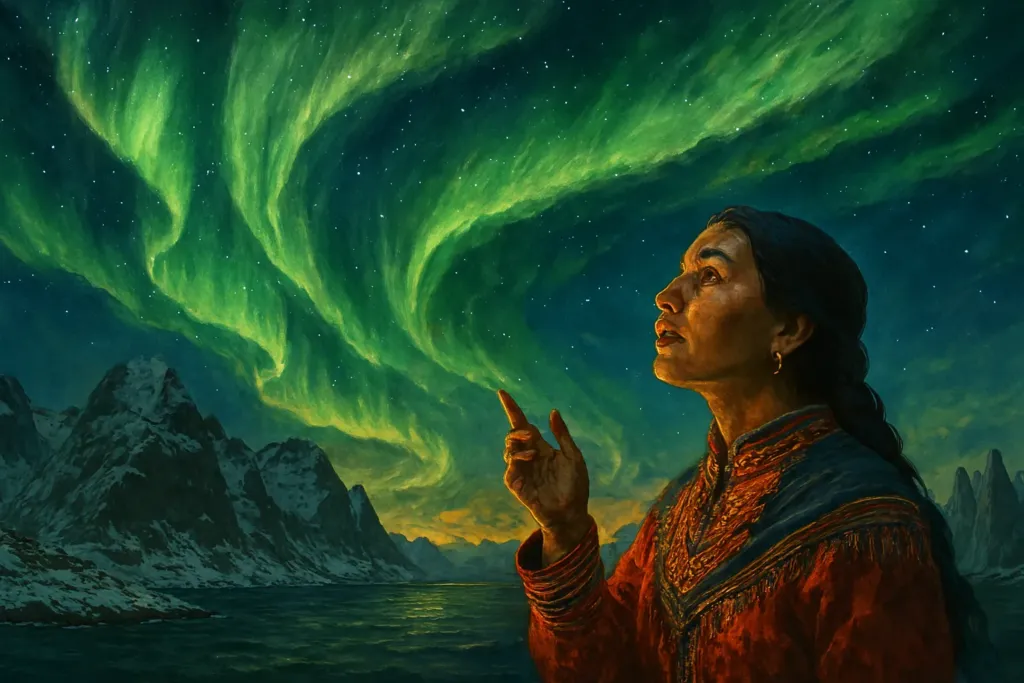The Northern Lights over the Lofoten Islands are not merely a natural phenomenon, but a deeply mythologized symbol embedded in the worldview of Northern peoples. For generations, the aurora has inspired reverence, fear, and storytelling—seen as a manifestation of the otherworldly.
Lofoten, inhabited by Norwegians and the Indigenous Sámi people, carries traditions in which the aurora borealis is perceived as the souls of ancestors watching over the living. In Sámi cosmology, the polar lights hold sacred meaning: during their appearance, the borders between worlds blur, allowing the dead to send messages to the living.
The intensity of the lights was interpreted as a sign—either the joy or concern of ancestral spirits. For seafarers, the flickering sky served as a warning or blessing before venturing into treacherous waters. The culture included strict taboos: one must never whistle beneath the aurora, for it could provoke spirit anger or cause one to vanish. Pointing at the lights was also forbidden, considered a disrespect to the spirits above.
Shamans—known as noaidi in Sámi tradition—used the aurora in their rites. Polar nights were moments when contact with spirits was believed to be strongest. Through the dance of light, shamans entered trance states, posed spiritual questions, and received visions. Some legends recount how chosen individuals “entered the aurora”—crossing into other realms and returning with sacred knowledge.
Contemporary residents of Lofoten still show respect for the aurora. Although scientific explanations are widely accepted, the phenomenon remains a symbol of ancient connection—between humans, nature, and the invisible world. For visitors, it’s a celestial spectacle; for locals, it’s a luminous echo of the past.
- 24 Facts About The Colosseum
- Why Colombia is dangerous for tourists
- Tennant Creek 1988: the most powerful earthquake in Australia’s history
- And in Africa the mountains are this high
- Madagaskar
- Bosnia and Herzegovina
- In the footsteps of Buratino: tourist spots from the beloved fairy tale and film
- Los Angeles
- Pakistan
- Indians
- Unadsdalur Church
- Tourism crime in Amsterdam: how to avoid becoming a victim
- Nanai
- Dagestan
- Reinhard Mey – Über den Wolken
- Lithuania
- Arabat Spit
- Depths of the Planet: The Most Impressive Depressions of Earth
- Namaqualand Flower Route
- North Coast 500: a grand loop of Scotland’s Northern Highlands











